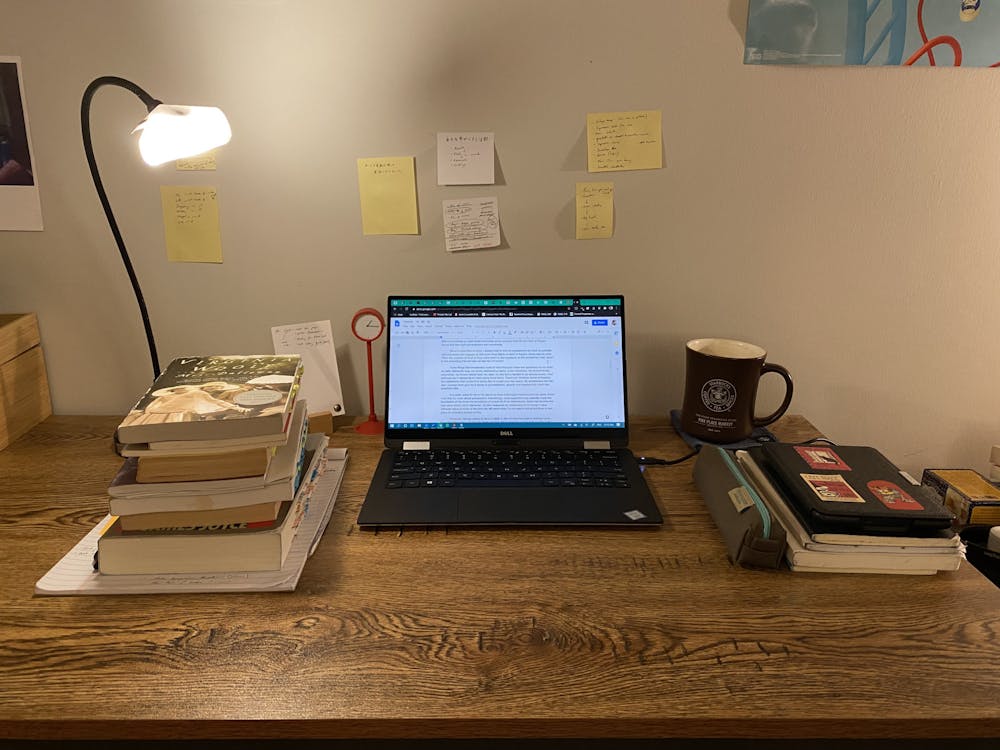
As I scroll past dozens of Thanksgiving posts on my Instagram feed, I feast my eyes on luscious meals and cheerful Duchenne smiles radiating behind face masks. But this doesn’t look like any ordinary Thanksgiving. Aside from the obvious fact that people are donning masks in many of these photos, the celebrations this year have taken on a smaller scope, with fewer festivities and fewer seats at the dinner table.
This year, Thanksgiving seems to be yet another case where we’ve had to make the difficult choice between going all out and staying home to help control the spread of the virus. Its status as a holiday has seemed to intensify the tension inherent in this choice; for me, staying home for this year’s celebration has somehow heightened the vague sense of ennui inherent to quarantine living. But at the same time, it’s also helped me focus on being grateful for the things I have around me: a fridge filled with food, a warm bed and, most importantly, four walls and a roof over my head — a comfortable place to quarantine in the first place.
The Thanksgiving stay-at-home mandates for the pandemic, as well as the many other stay-at-home mandates we’ve received throughout the year, have made me reflect on what home means to me. It has also prompted me to reflect on my childhood.
As someone who moved around a lot as a kid, I’m not used to being tied down to one place for a very long time. I didn’t have a very firm definition of home growing up.
But I don’t mean to say this was necessarily a bad thing. Moving between different countries and making friends from a variety of backgrounds taught me how to be adaptive and how to befriend people across cultural and religious boundaries. It also taught me that a lot of nice things in life — like afternoons playing Yu-Gi-Oh! with other kids at the park next to my house or weekends playing PlayStation 2 games with my friends — are fleeting and that these moments should be cherished.
It also taught me the importance of being selective about what types of possessions to keep during moves. The Lego sets, sketchbooks and other pieces of memorabilia that I carried between houses and apartments were things that helped transplant a feeling of domiciliary comfort from a previous home into a new one.
Thinking back on the past few years, I realize that life at Hopkins has reinforced this lesson about cherishing fleeting moments and being selective. I’ve lived in four separate places during my time at Homewood. I lived in AMR II my freshman year and in Rogers House my sophomore year. Junior year, I ventured off campus to a fifth-floor apartment up North Charles, and senior year, I moved with my roommates to a cheaper unit within the same building after they hiked up our rent.
I’ve cherished my short stays in each of these places and the memories associated with them. I’ll always remember peaceful mornings spent overlooking the AMR II courtyard, lazy afternoons picking up used books and locally-grown produce from the first floor of Rogers House and late-night conversations with roommates. I wouldn’t call a place my former home if it wasn’t memorable.
When it finally came time to move, I always tried to limit my possessions as much as possible (carrying boxes and luggage up and down three flights of stairs in Rogers House was no joke). Often what I left with were things that were either essential or that I felt were needed to make a space into a home. Some things that have stayed with me over the years have been my violin, my hefty Starbucks mug, my slowly deteriorating laptop, a few notebooks, my first-generation Kindle Paperwhite, my Korean pencil case and a handful of my favorite books.
There’s something about having these things together in one place that creates not just a sense of comfort but also a feeling of reassurance that only a home can provide.
Of course, having a place to eat and sleep is also an important part of defining home. But you can do those things at hotels too. What separates a hotel from a home is the “heart” part of that tired adage “home is where the heart is.” The “heart” part for me would have to be my most valuable memories and possessions.
Quarantine has helped clarify what home means to me: It’s the site of my most meaningful memories and the place where I can find my most valued possessions. In addition, what’s interesting is that since quarantine has basically made the boundaries of home the outer limit of almost all experience, home has become the only place where I form memories. It’s also deepened my relationship to the things I value. I’m thankful that after so many years of moving between different places and constantly moving in and out of the house — to class, to meetings, to lab, to volunteer work — quarantine has given me the opportunity to anchor myself at home and reflect on what it means to me.
One thing I learned as a kid was the importance of meaningful goodbyes. I allowed myself to be sad when parting with people and places but also kept in mind that I can always carry parts of those experiences with me and that there are some things that will never change.
When I leave this apartment, I hope I’ll be able to do the same — to cherish the gastronomical adventures in the kitchen, the Sunday mornings reading in the sun room, the late-night laughs shared with roommates and maybe even those mundane moments doing laundry or getting ready for bed. Wherever I am, I know I’ll feel at home, surrounded by objects of the most “heart”-felt significance.
Jae Choi is a senior studying Neuroscience and English from Carrollton, Texas. He is an aspiring MD candidate. In his column, he enjoys making sense of extended stays at home during the pandemic and exploring how to find significance in everyday activities.

















